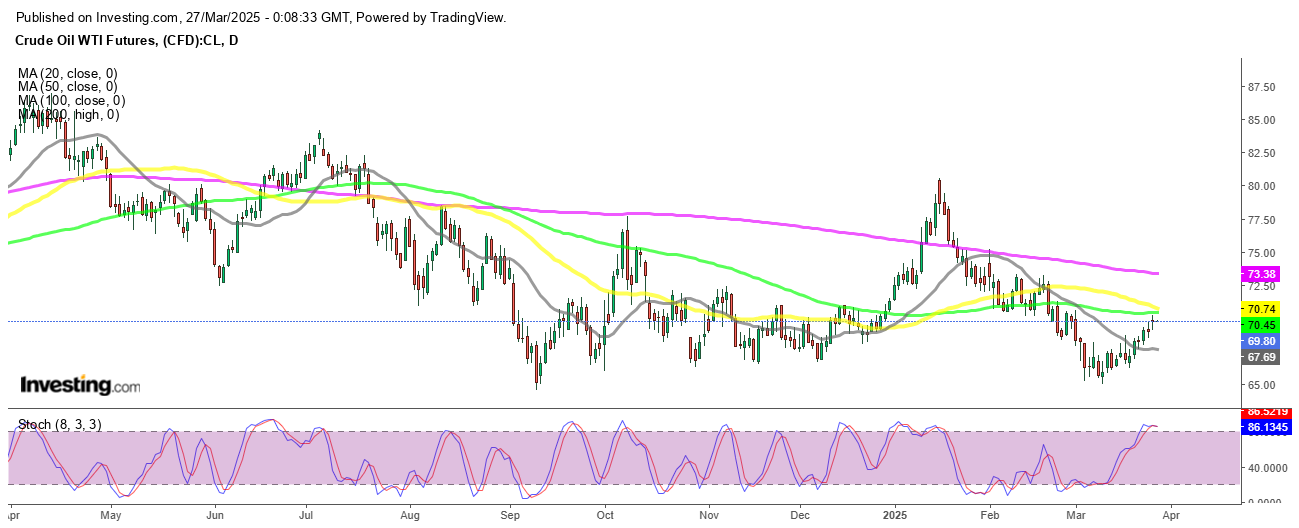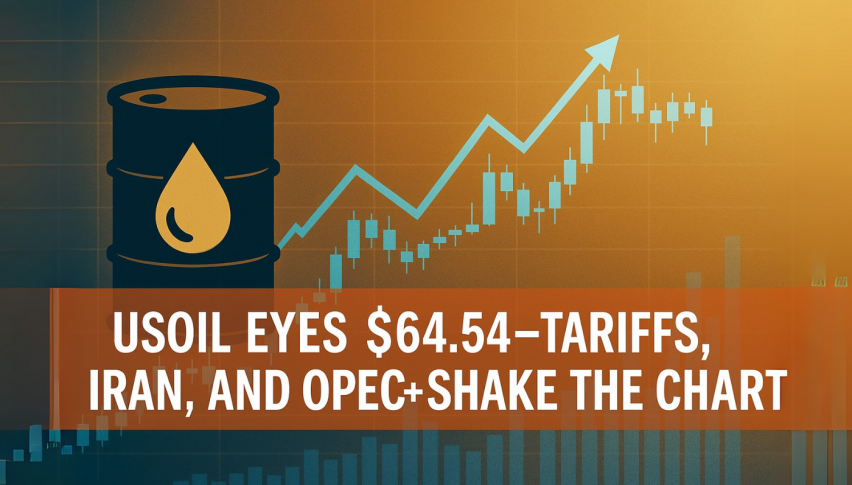Crude Oil and US Gas Prices Rise This Week as Ukraine Conflict Persists
WTI Crude Oil peaked above $70 yesterday, while gasoline prices increased by 0.2% to $3.24/gallon, as Ukraine continues to drag...

Live USOIL Chart
WTI Crude Oil peaked above $70 yesterday, while gasoline prices increased by 0.2% to $3.24/gallon, as Ukraine continues to drag the peace deal with Russia.

Oil Prices Rebound After January Slump
Crude oil prices experienced a significant drop in January, with WTI crude falling below $65 per barrel earlier this month. This decline was largely driven by global economic slowdown concerns and expectations of a resolution in the Ukraine-Russia conflict, which had previously added a risk premium to energy prices. However, the situation has changed in the last two weeks, as Ukraine delays finalizing a peace deal, reigniting geopolitical tensions.
WTI Oil Chart Daily – Retrace Higher Is Complete
As a result, WTI crude has climbed more than $5, surpassing $70 per barrel yesterday, reflecting renewed market uncertainty. Despite this recovery, the implementation of US trade tariffs could dampen sentiment and trigger a bearish reversal in oil prices. In anticipation of this, a sell oil trade was initiated yesterday when WTI crude briefly spiked by $1 following the EIA report, despite rising crude stock levels.
EIA Weekly Crude Oil Inventory Report – March 21
Key Data & Comparisons
Crude Oil Inventories: -3.341M barrels vs. -0.956M expected (prior: +1.448M)
Gasoline Inventories: -1.446M barrels vs. -1.830M expected
Distillate Inventories: -0.421M barrels vs. -1.568M expected
Refinery Utilization: +0.1% vs. +0.5% expected
Comparison with Private Data
Yesterday’s API (American Petroleum Institute) report set higher expectations:
Crude: -4.6M barrels (vs. -3.341M actual from EIA)
Gasoline: -3.3M barrels (vs. -1.446M actual from EIA)
Distillates: -1.3M barrels (vs. -0.421M actual from EIA)
While this report suggests continued crude inventory tightening, expectations had already been elevated by the API figures. As a result, the oil market may react cautiously, with price gains limited unless further supply constraints emerge. Traders will closely watch OPEC+ production policies and upcoming demand forecasts for additional direction.
Impact on US Gasoline Prices
The broader decline in crude oil prices earlier this year had a direct impact on US gasoline prices, which have steadily fallen over the past month. The average retail gas price currently stands at $3.184 per gallon, down from $3.492 per gallon a year ago, marking an 8.8% year-over-year decrease.
However, this week saw a 2% increase in pump prices, with US gasoline rising to $3.24 per gallon as crude prices rebounded. The fluctuating market conditions suggest that while short-term oil and gas prices may continue to rise, external factors such as tariffs, economic uncertainty, and geopolitical developments could dictate the longer-term trend.
Conclusion
The recent increase in crude oil and gasoline prices underscores the market’s sensitivity to geopolitical risks and trade policies. If tensions in Ukraine persist and supply constraints emerge, further price hikes may follow. However, US trade tariffs and economic headwinds could reverse the upward momentum, making the oil market highly volatile in the coming weeks. Traders should watch for developments in peace talks, OPEC+ decisions, and US economic data to gauge the next potential move in oil prices.
US WTI rude Oil Live Chart
- Check out our free forex signals
- Follow the top economic events on FX Leaders economic calendar
- Trade better, discover more Forex Trading Strategies
- Open a FREE Trading Account




